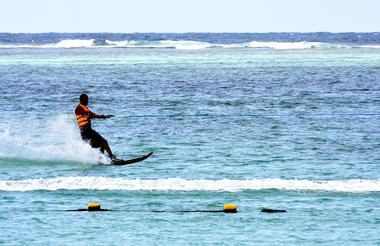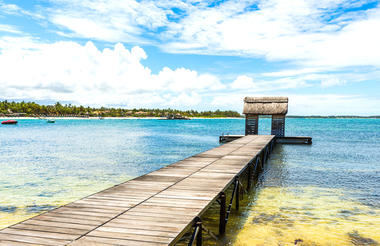A nation of spectacular natural beauty, friendly people and rich culture, Zimbabwe’s status as one of Africa’s leading safari destinations was dampened for years by its political instability. But now that the country is transcending its strife and returning to a state of equilibrium, it is once again emerging as a vacation highlight of the continent. Victoria Falls – known to locals as ‘The Smoke That Thunders’ – is one of the seven natural wonders of the world and the sheer power of this massive body of water plunging into the Zambezi Gorge is awe-inspiring and unforgettable. Lake Kariba, with its game-rich shores and islands, is an idyllic safari spot featuring mind-blowing sunsets; Hwange National Park is known for its huge herds of elephants; and a kayak trip down the Zambezi through the Mana Pools National Park will appeal to the intrepid traveller, providing close encounters with crocodiles, hippos and a host of other wildlife.
Resting on the southern banks of the Zambezi river at the western end of the eponymous falls, this popular tourist town is compact enough to walk around and makes an ideal base for travellers exploring the seventh wonder of the world, the unfathomably vast Victoria Falls. About two thirds of the falls can be viewed from the Zimbabwean side and, while the falls are undoubtedly the star attraction, the area provides both adventure seekers and sightseers with plenty of opportunities to warrant a longer stay. Popular activities include scenic flights over the falls in helicopters or micro lights, bungee jumping off the Victoria Falls Bridge, white-water rafting (seasonal), and day trips to Chobe National Park. The town itself offers some excellent accommodation and restaurant options as well as an eclectic variety of African curios and authentic art sold by friendly Zimbabwean locals who are wonderfully welcoming and eager to help you enjoy your stay.
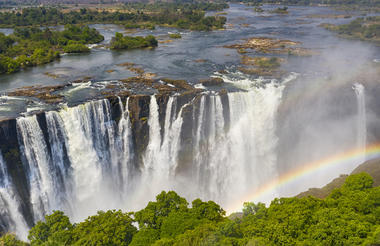
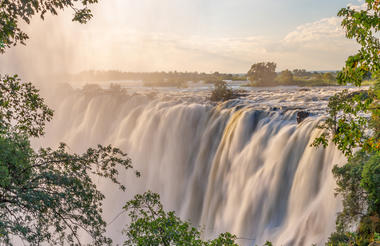
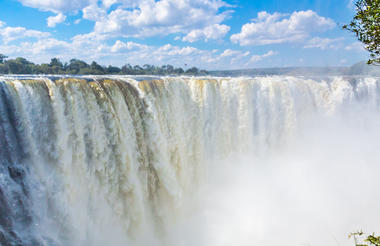
Despite recent and surprisingly rapid modernization, Botswana’s cities provide little in the way of tourist attractions. However, what the cities lack in excitement, the surrounding wilderness areas more than make up for in outstanding natural beauty. The country’s primary tourist draw card is undoubtedly the vast red expanse of the Kalahari desert and its remarkably beautiful Okavango Delta - the largest inland delta in the world provide a haven for an abundance of African wildlife. Other highlights include the impressive Makgadikgadi salt pans where visitors are privy to massive zebra migrations during the flood season; the Savuti plains which host large prides of lions; and the Tsodilo Hills where 4500 rock paintings form a unique record of human settlement over many millennia.
The Chobe River forms the northern boundary of the Chobe National Park, renowned for its reliable and diverse game viewing. Safaris are conducted both by boat and on land. This section of the park is best known for its elephant and hippo populations but the waters attract all manner of game including large herds of buffalo and the lions that prey on them.
Lying in the middle of the largest expanse of sand on earth the Okavango Delta is one of Africa’s most amazing, sensitive and complex environments supporting a spectacle of wilderness and wildlife. Unique as one of the world’s few inland deltas, the placid waters and lush indigenous forests offer a safe haven for innumerable bird and wildlife species. The Okavango Delta offers a number of activities for the visitor; game viewing, birding and fishing are all on offer. One can experience this magical world of islands and waterways from land, air and water. Highlights include the elusive Sitatunga antelope which has found refuge in this pristine wetland ecosystem, while birds such as the African fish eagle, Pel's fishing owl and many others provide a spectacular display.
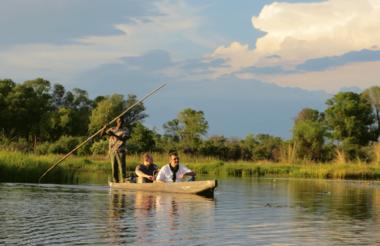
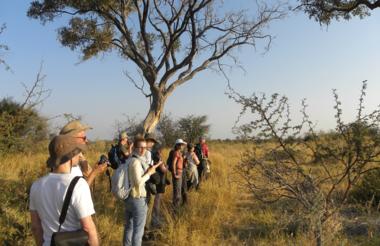
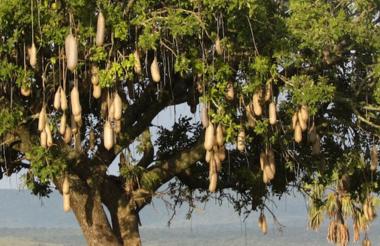
Blessed with crystal clear turquoise waters, gorgeous powder white sand beaches and a wonderful tropical climate, the idyllic island of Mauritius is a remarkably romantic holiday destination. While most visitors spend their days relaxing in one of the many luxurious holiday resorts, there is much more to this little island than merely cocktails and coconuts. Those who venture inland will discover lush, jungle-clad mountains, glistening blue lagoons, impressive rivers and waterfalls, extinct volcanic craters, charming little ramshackle towns and villages, and some fabulously friendly locals. Must-see attractions include: the bustling capital of Port Louis with its lively local markets; the remarkable 85m high Chamarel Waterfall; and Eureka, a historical plantation mansion turned museum offering visitors a glimpse into the island's colonial past. No matter how you spend your time on this lovely little island, it is sure to fulfil all your fantasies of a tropical island paradise.
Situated in the Riviere du Rampart District, on the north coast of Mauritius, Grand Gaube is a quiet village surrounded by beautiful white-sand beaches, lapped by the crystal-clear waters of the Indian Ocean, and fringed by swaying palms. Visitors can look forward to snorkelling, swimming and excellent diving in the impossibly turquoise waters, enjoying local musicians and dancers entertain at a variety of restaurants and bars, discovering the vibrant nightlife, and browsing bustling markets. Other popular activities include: boating, golfing, and lazing on an array of pristine beaches.



Stunningly beautiful Belle Mare Beach is one of Mauritius’s most desirable locations, featuring scores of coconut palms and evergreen trees, snow white sand and a deep, calm bay. The beach is best visited during the week when it is relatively quiet; it’s a favourite spot with locals so can get crowded on weekends. There is a wide selection of hotels and restaurants along the beachfront and for avid sportsmen the area also boasts two excellent golf courses – a 9-hole and 18-hole course.

